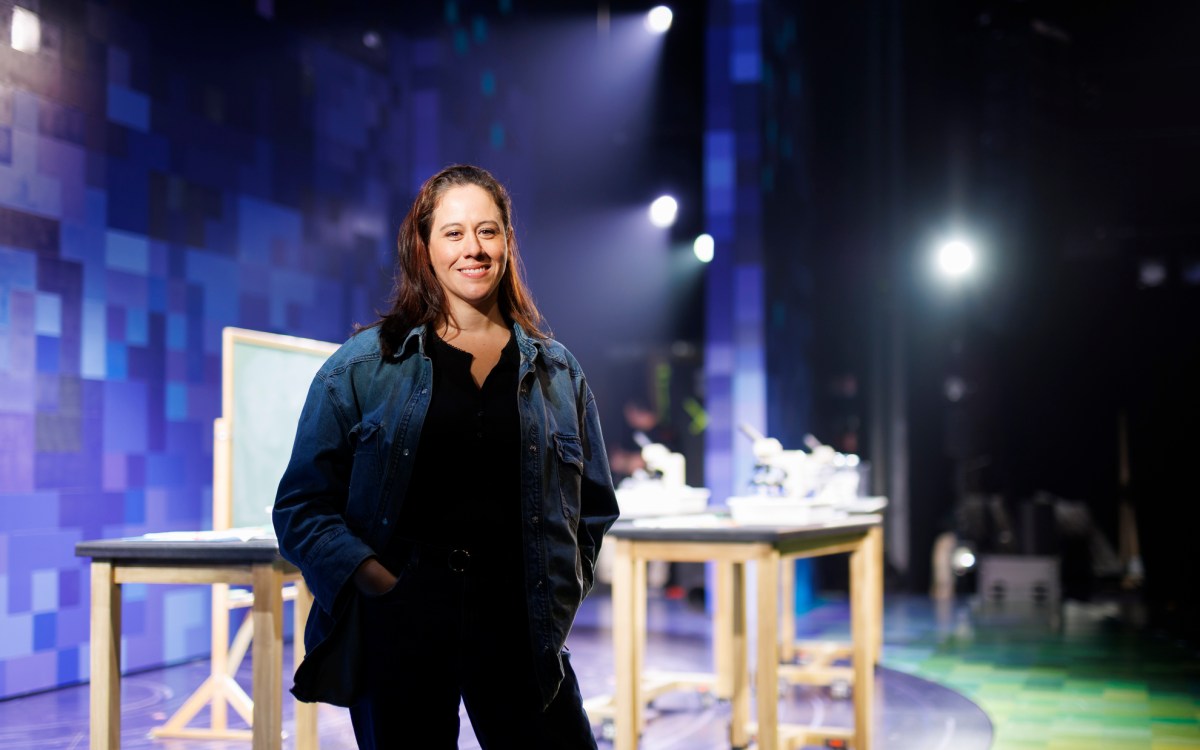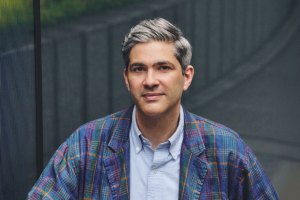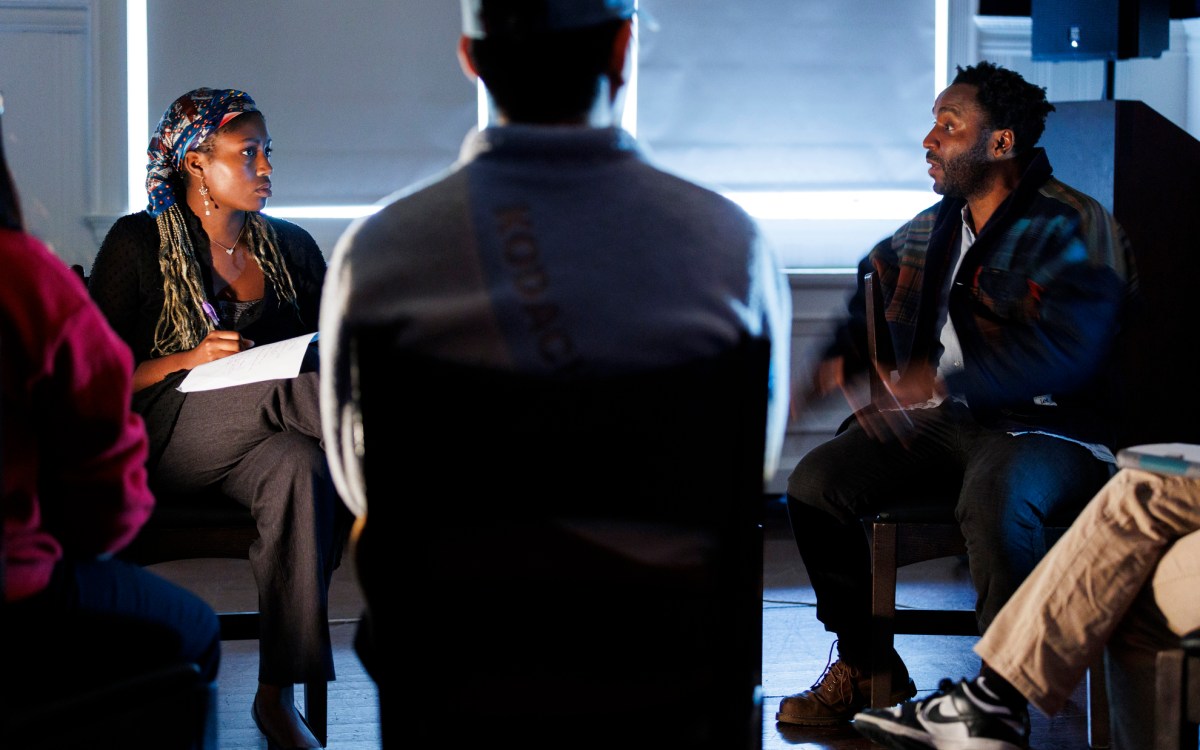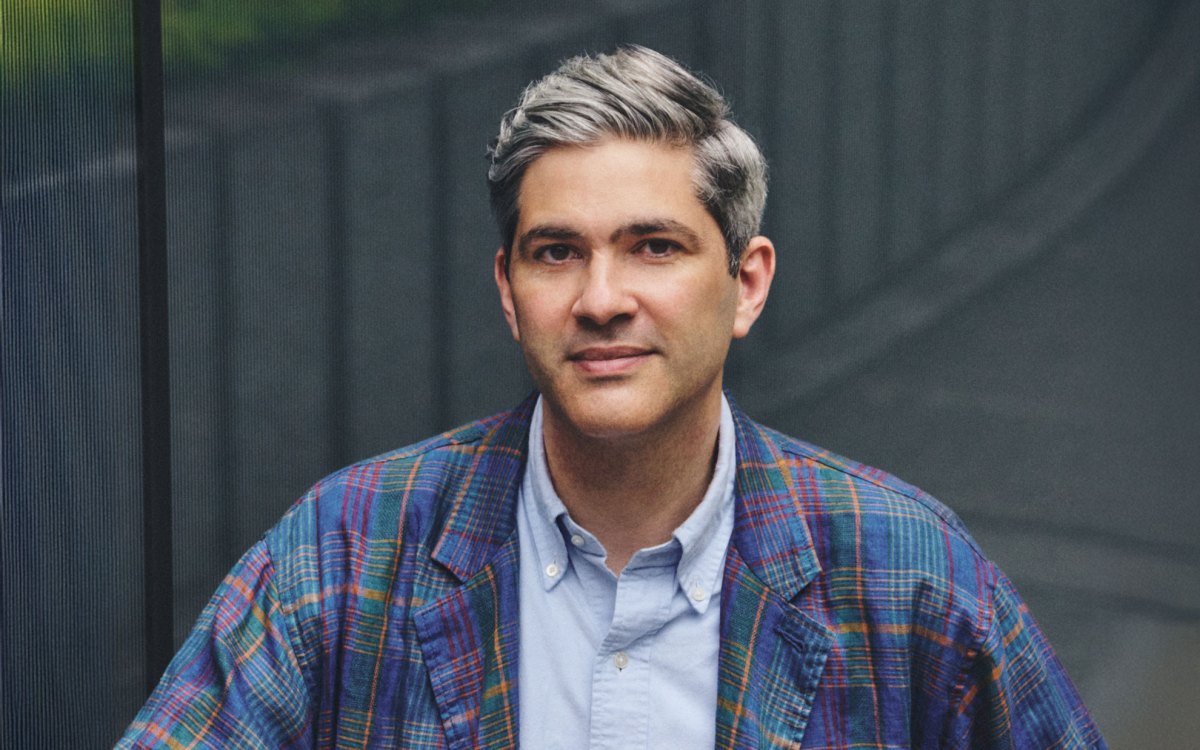
Adam Stack (above), a Graduate School of Arts and Sciences student in the Department of Anthropology, believes the “Cast in Bronze” workshop has transformed his approach to teaching. “The class gave me a whole new array of ways to use objects, and not only bronze objects, in discussion and lab sections in class,” he said.
Stephanie Mitchell/Harvard Staff Photographer
Casting an impression
Students find creative license at foundry in Chelsea
Nine Harvard students recently stepped out of their comfort zones to attempt a fiery art form with which none had any experience: bronze casting.
But after just one week of gallery visits, instruction, and studio time, each left with a bronze medallion and a sand-casted relief of their own design.
Through studio sessions at the New England Sculpture Service, the Wintersession 2012 course “Cast in Bronze: A Workshop in Exploring and Creating Bronze Sculpture” provided the opportunity not only to create bronze sculptures, but also to better understand the practice and craft of making art. More important, according to course sponsor Suzanne Blier, the Allen Whitehill Clowes Chair of Fine Arts in the Department of African and African American Studies and the Department of the History of Art and Architecture, the sessions gave participants the chance to see such art — and the process of making it — in a new light.
“One of the great things about doing this kind of hands-on experience, the same as fieldwork, is that it challenges you to think about materials or a subject in an entirely new way,” Blier said. “As teachers and scholars, it’s important that we provide as many opportunities as possible to get students into the realm of challenging what they know about their field of study, and finding new ways of looking at objects or cultures.”
For participant Adam Stack, a Graduate School of Arts and Sciences (GSAS) student in the Department of Anthropology, the workshop has transformed his approach to teaching. “I think it will have a long-term impact on my research, and it’s had an immediate impact on the way I approach hands-on learning,” he said. “In the archaeology courses I teach, we often use artifacts from the collection at the Peabody Museum. The class gave me a whole new array of ways to use objects, and not only bronze objects, in discussion and lab sections in class.”
Funded by the President’s January Innovation Fund for Faculty — and presented by the Harvard Art Museums and the Department of the History of Art and Architecture — the course was co-organized by Francesca Bewer, research curator with the Straus Center for Conservation and Technical Studies, and Akiko Yamagata, museum educator with Harvard Art Museums. Bewer agreed that the tactile aspect of the course, in conjunction with gallery visits and seminars, allowed the students to develop a deeper interpretation of art. “Knowing how something is made adds to one’s vocabulary of seeing and appreciation of an artist’s choices and skills,” Bewer said.
According to Yamagata, nine students were selected for the class based on the diversity of their backgrounds and interests. Marisa Mandabach, a GSAS student in the history of art and architecture, took the course in order to gain a more practical understanding of her field. “I have always believed there are forms of knowledge you can’t learn in books,” she said, “particularly when it comes to art history. I’ve read about bronze casting so many times, but never felt like I really understood it. With a technique as intricate and complicated as bronze casting, you really have to try it yourself to understand it in a concrete, embodied way.”
Fellow course participant Kara Feilich, a graduate student in organismic and evolutionary biology, agreed that the course had given her a new perspective on the effort and dedication required to make artistic objects. “To see how these things are made gives you a whole new appreciation for the art you see in a museum,” Feilich said. “Before, I would look at a piece of art in a museum and say, ‘Oh, that’s nice,’ but now … the class just added a new dimension of understanding for me.”
Even students with extensive art backgrounds found the intricacy and complexity of bronze casting to be a challenge. “I was surprised by how difficult it was to carve in wax,” Mandabach said. “I have significant experience with drawing, and was surprised and frustrated at how few of those skills translated. Working in three dimensions involves not just different manual skills, but entirely different ways of seeing.”
What participants did not expect was how powerfully the act of creating art would affect them. “I was surprised by the commitment of the students to the entire workshop and by how immersed they — and we, the organizers of the workshop — became in the process of creating our works,” Yamagata said. “I was also surprised by the generosity of each of the participants in sharing their own knowledge with their fellow participants.”
For Michelle Chang ’15, the course’s only undergraduate student, the course has already had an impact on the way she perceives her field, urban planning. Now that she understands “the labor-intensive process of the molds and casts and all the technical details of pouring the metal, I find myself examining sculptures that I encounter in parks or buildings, trying to figure out how the artist created the work,” she said.
Blier noted that the interdisciplinary makeup of the class also contributed to its success. “As a tool for teaching,” she said, “the class brought people together in a deep and very creative way — and that doesn’t often come out the same way in the classroom, even when students are in the same discipline. Bringing together students from so many different fields was really critical.”
Blier, whose current research focuses on 14th-century bronzes from Nigeria, was so impressed with the course that she is incorporating her newfound knowledge into her research. “I didn’t anticipate how enormously fun it would be, as well as really, really challenging!” she said. “I now have so much appreciation for the craft, and learned a huge amount that I’m now integrating into my writing.”
For Feilich, the course served a simpler purpose: It provided a welcome creative boost. “I hadn’t done any art work, ever, so I wondered if I was missing out,” Feilich said. “After taking the class, I’ve definitely thought more about pursuing artistic opportunities because I enjoyed it so much.”
The “Cast in Bronze” workshop included seminars at, and gallery visits to, multiple Harvard organizations, including the Arthur M. Sackler Museum, the Harvard Ceramics Program, the Collection of Historic Scientific Instruments at the Science Center, the Straus Center for Conservation and Technical Studies, and the Peabody Museum of Archaeology and Ethnology.
[gz_gallery id=102650]




